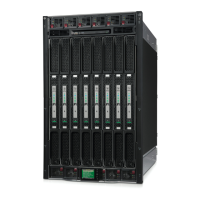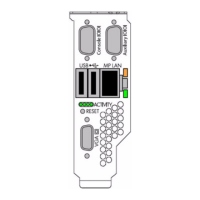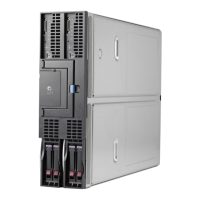1. Network ports (24)
2. WAN port
3. AUX port
4. CNSL port
5. RST button
6. PG (Power Good) LED indicator
7. HB (Heart Beat) LED indicator
Figure 5: RMC front panel connections
Unit numbering
Bays in the racks are numbered using standard units. A standard unit (U) is equal to 1.75 inches (4.445
cm). Because the chassis occupy multiple units, locations within a rack are identified by the bottom unit
(U) in which the chassis resides. For example, in a 42U rack, an MC990 X server chassis positioned in
U01 through U05 is identified as U01.
Rack numbering
Each rack is numbered with a three-digit number sequentially beginning with 001. A rack contains one or
more MC990 X server chassis, one RMC, optional mass storage enclosures, and other optional
components. In a single rack system, the rack number is always 001.
HPE Integrity MC990 X system features
The HPE Integrity MC990 X server is a modular system. The compute, memory, and PCIe components
are housed in the MC990 X chassis. Additional optional mass storage may be added to the system along
with additional MC990 X chassis.
You can add different types of PCIe board options to a server to achieve the desired system
configuration. You can easily configure systems around processing capability, I/O capability, memory size,
or storage capacity. Each air-cooled MC990 X chassis has redundant, hot-swap fans and redundant, hot-
swap power supplies.
Distributed shared memory (DSM)
In the Integrity MC990 X system, memory is physically distributed both within and among the MC990 X
server chassis (compute/memory/I/O); however, it is accessible to and shared by all NUMAlinked devices
within the SSI. This means all NUMAlinked components sharing a single Linux operating system operate
and share the memory fabric of the system. Memory latency is the amount of time required for a
processor to retrieve data from memory. Memory latency is lowest when a processor accesses local
memory. Note the following subtypes of memory within a system:
• If a processor accesses memory that it is connected to on an MC990 X server chassis motherboard,
the memory is referred to as the processor local memory. Figure 6: MC990 X server chassis
10 Unit numbering

